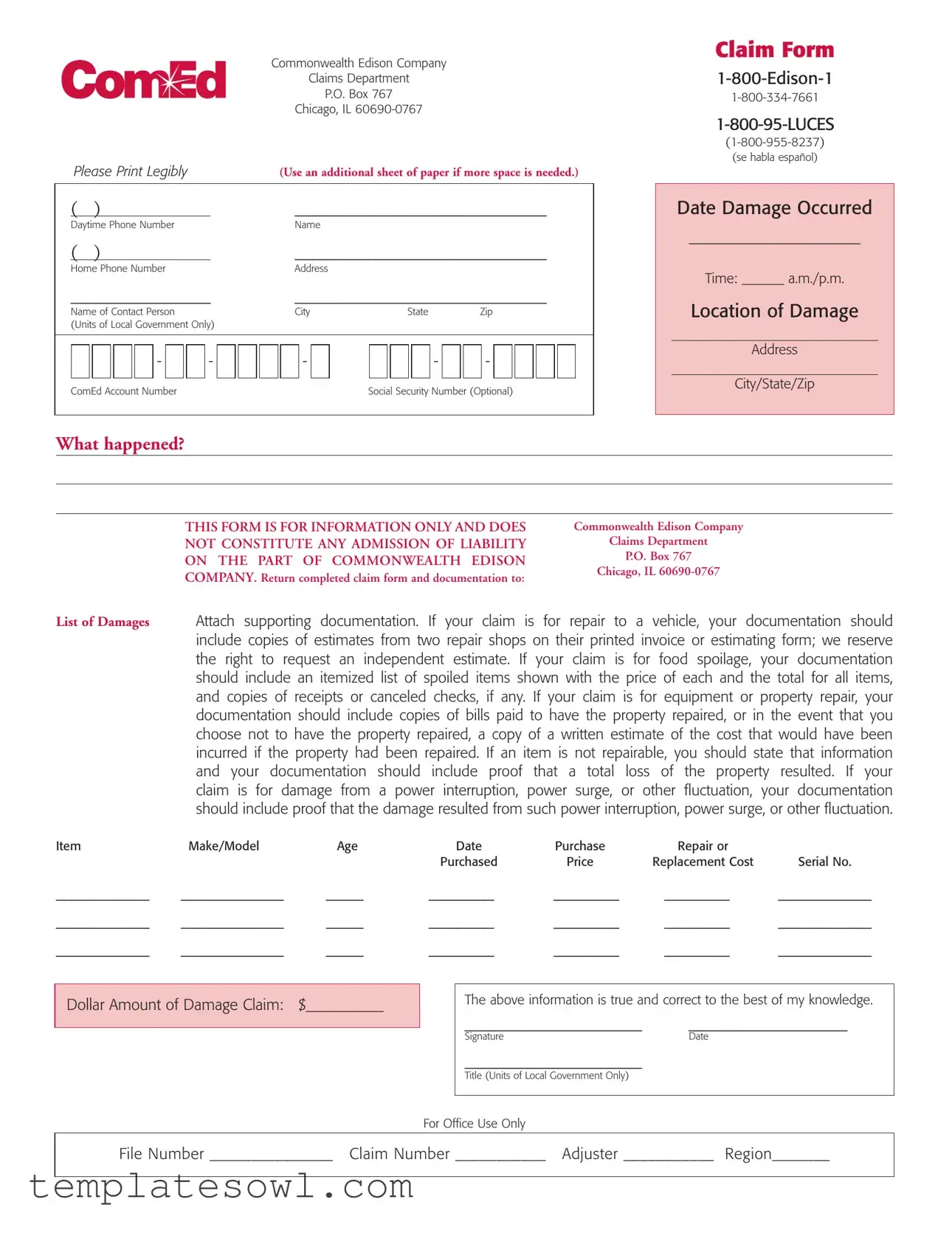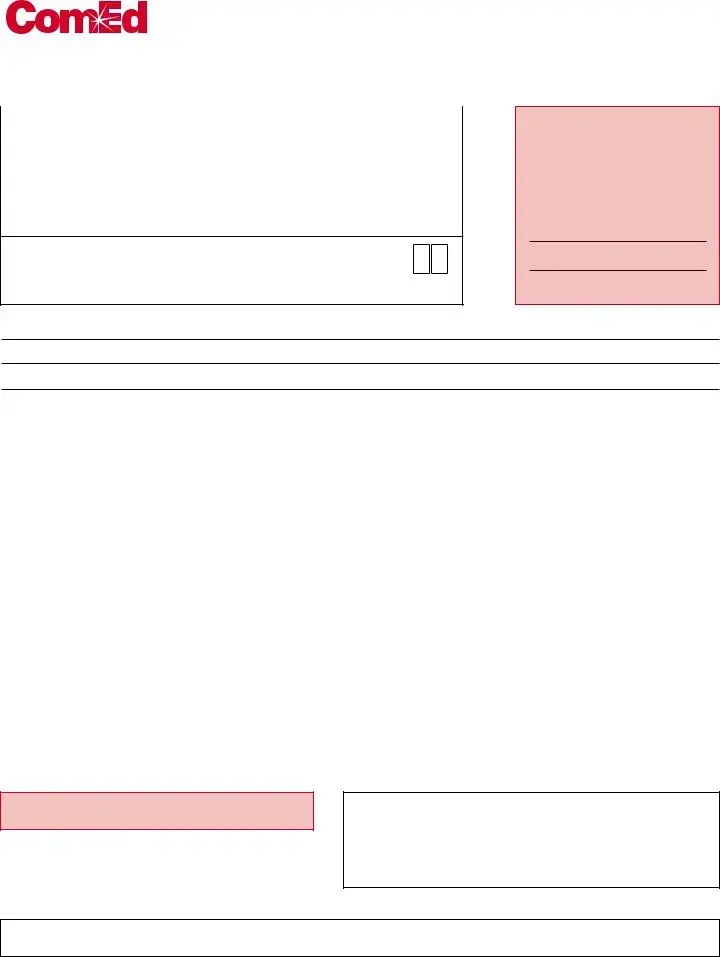The ComEd 1800 form serves as a vital tool for customers seeking compensation for various damages associated with Commonwealth Edison Company’s services. When filling out this claim form, customers must provide detailed information about the incident, including the location, date, and nature of the damage incurred. Essential personal details, such as contact information and ComEd account numbers, help streamline the process. Additionally, the form allows individuals to describe the specific damages, be it to property, vehicles, or food spoilage, and mandates that they attach supporting documentation. This evidence can range from repair estimates to receipts, all of which are crucial for substantiating the claims. Importantly, the form clearly states that submitting it does not equate to an admission of liability by ComEd, thereby establishing a preliminary understanding of the claims process. Customers are encouraged to be as thorough as possible when completing the form, as this can significantly impact the investigation and resolution of their claim. Moreover, understanding the legal framework surrounding these claims, such as Section 16-125 of the Illinois Public Utilities Act, is key for customers, especially when it comes to power interruptions or fluctuations that may affect eligibility for damages. Consequently, navigating the nuances of the ComEd 1800 form can determine not just the outcome of a claim, but also the experience of the customer in a potentially challenging situation.


